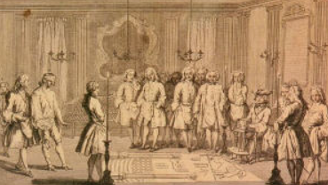Freemasonry is the world’s oldest and largest fraternal organisation, with its roots in the UK tracing back to the early 18th century. The first Grand Lodge of England was formed on 24th June 1717 at the Goose and Gridiron Tavern , marking a significant moment in the evolution of Freemasonry. This meeting brought together senior Masons from four Lodges in London, marking a pivotal moment in the establishment of a structured and unified Masonic organisation. The formation of the Grand Lodge at this tavern initiated the regulation and governance of Masonic rituals and traditions, which have continued to be an integral part of Freemasonry to this day. This period saw a diligent search for documents related to the practices and customs of the medieval Operative stonemasons, who are considered the precursors of modern Speculative Freemasonry.

In the years that followed, two rival Grand Lodges emerged: the Premier Grand Lodge, known as the ‘Moderns’, and a breakaway faction dubbed the ‘Antients’. These two Grand Lodges did not recognise each other’s affiliated Lodges, leading to a division within Freemasonry. By the early 19th century, negotiations began to unite the two factions, culminating in the creation of the United Grand Lodge of England (UGLE) in 1813. A special Lodge of Reconciliation was established to devise a new Ritual that would be acceptable to all, which was published in 1816.
Freemasonry flourished in the 19th and early 20th centuries, with Freemasons becoming prominent figures in their communities, known for their charitable work and public processions in regalia. However, during the rise of Fascism in the 1930s, Freemasons faced persecution in several European countries, with many being imprisoned or killed.
Despite these challenges, Freemasonry has continued to thrive in the UK, maintaining its commitment to moral and spiritual values, brotherhood, and charity. Today, it remains a significant part of the social fabric, with millions of members worldwide.
